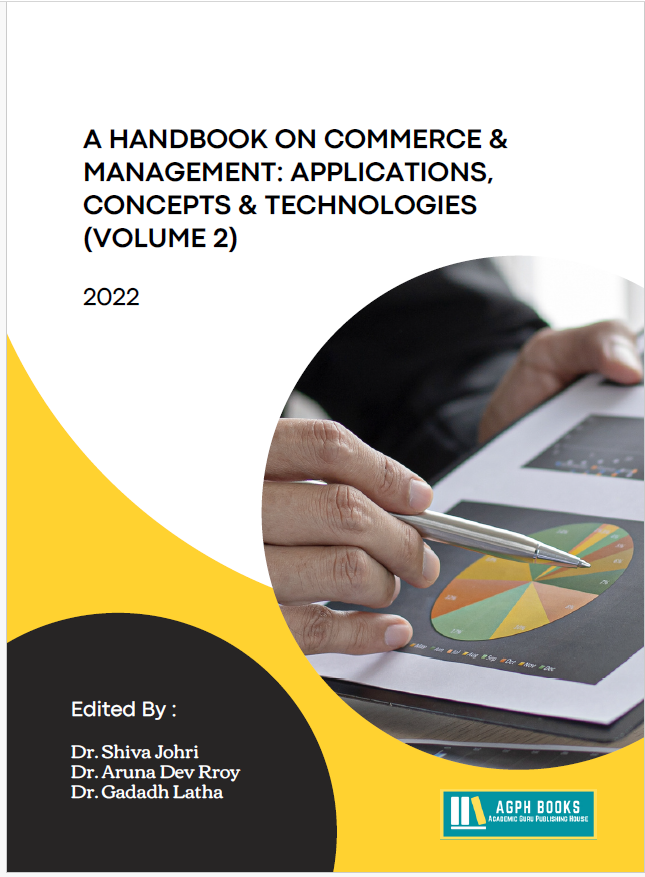A Review on Challenges of Digital Payment System in India
Keywords:
Digital Payment, India, Challenges, Online/E-PaymentAbstract
All of the companies are thinking about updating their current payment infrastructure as a result of the widespread adoption of mobile and internet technology, the ongoing demand for transactions that are swifter, more secure, and less cumbersome, and the newly imposed restrictions
brought on by the pandemic. Digital payments have taken the globe by storm, and as a result, governments, fintech companies, and private businesses have begun working together in an effort to provide a payment infrastructure that is real-time, cost-effective, adaptable, resilient, and accepts several currencies. Technology advancements in areas such as artificial intelligence (AI), cloud computing, and other areas, the emergence of new innovations, newly enacted regulatory reforms, multiple demands for increased payment volumes, customer expectations for shorter settlement times, and ongoing pressure to reduce payment costs are all important factors that are contributing to the multiplication of the rate of adoption. Due to its close monitoring with the regulators on various initiatives undertaken by fintech’s and banks, India is considered to be one of the most regulated countries in the world, particularly in the Academic Guru Publication House the regulatory difficulty while at the same time providing a medium for prospering aspects. This is due to the speed at which the industry operates. While this is true, there are still obstacles that need to be conquered in order to fully harness the potential of digital payments. Some of these obstacles include cyber fraud, infrastructure, awareness, acceptance in tier 3, 4, and
cities, as well as transaction costs.
References
[1] ALI, S. M. S., AKHTAR, M. W., & SAFIUDDIN, S. K. (2017). Digital paments for rural India-Challenges and opportunities. International Journal of Social and Economic Research, 9(3), 279. https://doi.org/10.5958/2249-6270.2019.00035.7
[2] Devi, R. (2019). CHALLENGES OF INDIAN E-PAYMENT SYSTEM. 6(4), 668-677.India,
[3] R. B. of. (2021). Payment and Settlement Systems in India - Journey in the second decade of the millennium. 142. https://rbidocs.rbi.org.in/rdocs/Publications/ PDFs/PSSBOOKLET93D3AEFDEAF14044BC1BB36662C41A8C.PDF Jain, S. A., & Punjabi, D. N. M. (2022). A Study On Challenges Faced By The Consumers And Its Impact On Usage Of Digital Mode Of Payments In The City Of Mumbai. 10(3), 896-906.
[4] Malusare, L. (2019). Digital Payments Methods in India : A study of Problems and Prospects. International Journal of Scientific Research in Engineering and Management (IJSREM), 03(08), 1-7.
[5] Pavithra, C. B., & Ranganayaki, A. C. (2018). Emerging Trends and Innovations in Modern Management Types, Opportunities and Challenges of Digital Payment Systems in India. 377-386.
[6] Rachna, & Singh, P. (2013). Issues and Challenges of Electronic Payment Systems.
[7] International Journal for Research in Management and Pharmacy, 2(9), 25-30. http://raijmr.com/wp-content/uploads/2014/02/3_25-30-Rachna-et-al. [8]Singhal, M. R. (2021). International journal of Multidisciplinary educational research Impact and Importance of Digital Payment in India. Peer Reviewed and Refereed Journal, 514(10), 100-104. www.ijmer.in
[9] T S, S., & C D, J. (2017). Opportunities and Challenges of E- Payment System in India. International Journal of Scientific Research and Management, September 2017. https://doi.org/10.18535/ijsrm/v5i9.02




